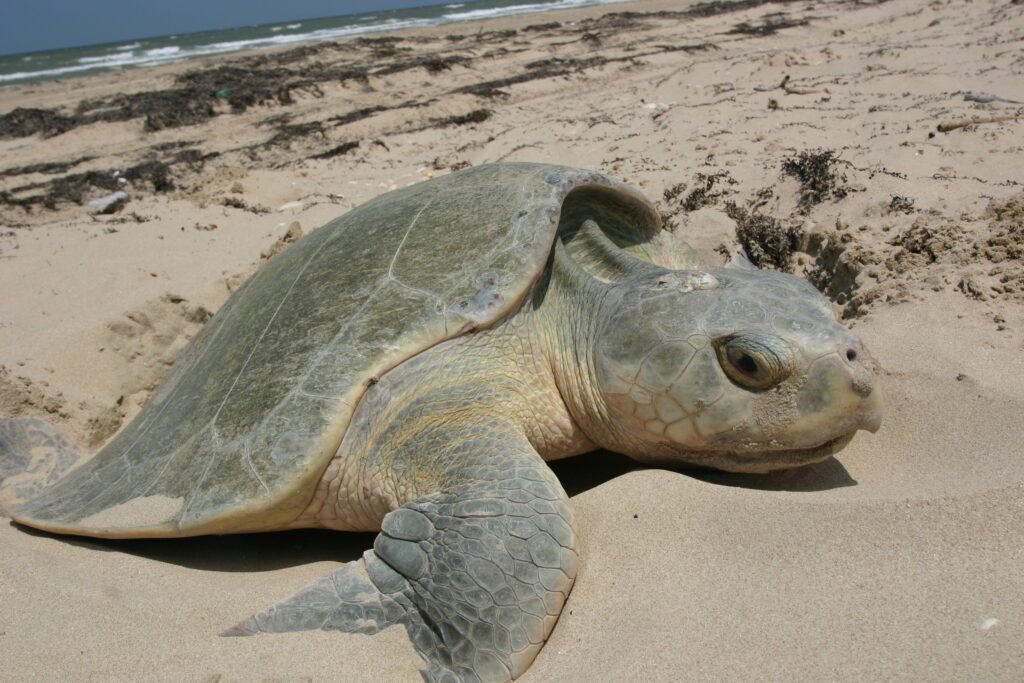Picture this: under the moonlit skies of a warm Florida night, an ancient ritual unfolds on sandy beaches that has been happening for millions of years. Florida’s coastline provides critical nesting habitat for loggerhead, green, and leatherback sea turtles that use the state’s beaches to lay nests each year. What many people don’t realize is that Florida’s beaches actually serve as nesting grounds for more sea turtle species than just these three commonly known ones.
The Loggerhead Sea Turtle – Florida’s Most Common Nester
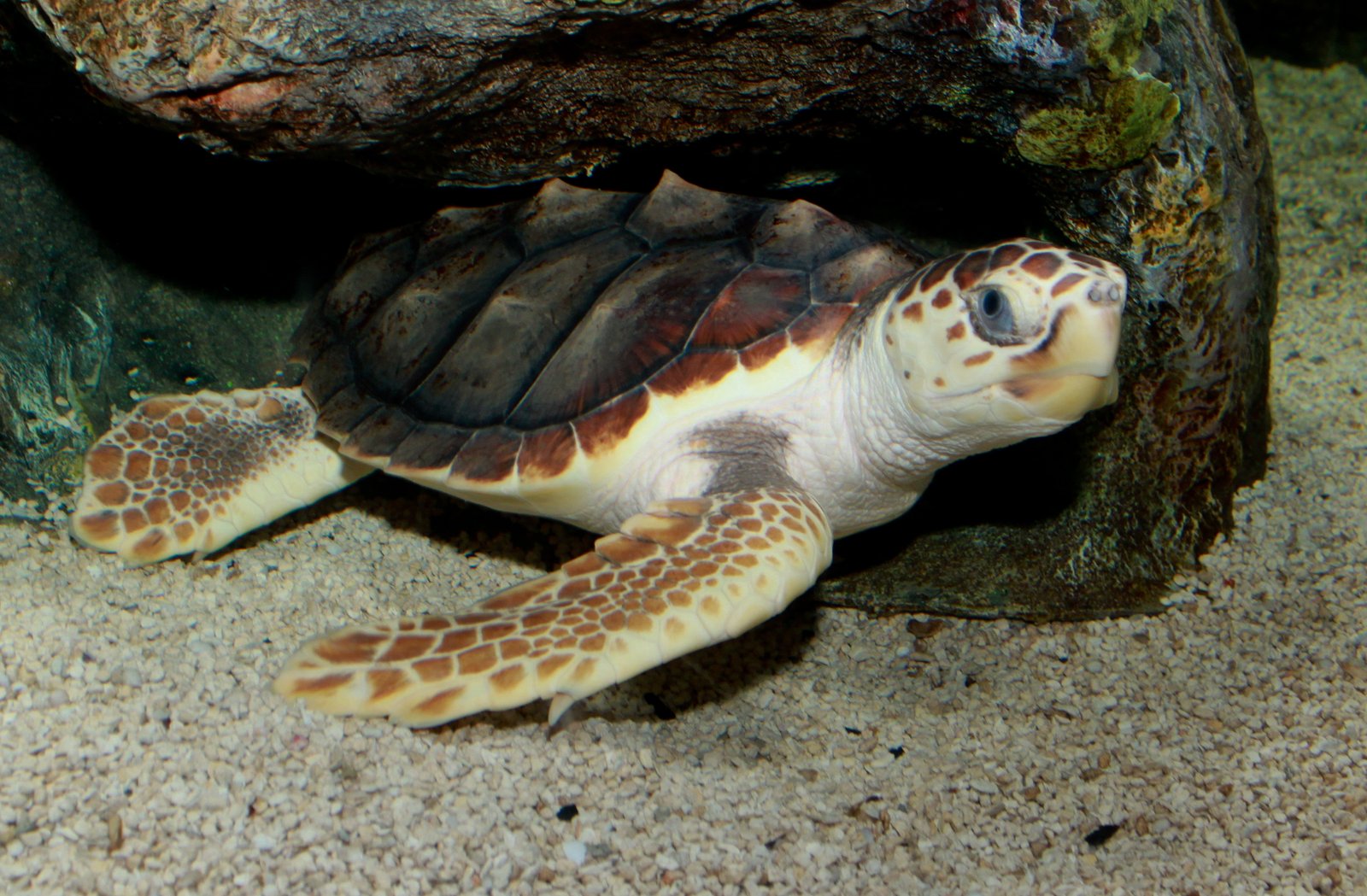
Loggerhead turtles are the most common sea turtles that nest on Florida’s beaches. These magnificent creatures, weighing between two hundred to two hundred fifty pounds on average, have been making their way to Florida shores for countless generations. You can recognize their distinctive tracks by the alternating diagonal flipper marks they leave behind in the sand.
What makes loggerheads particularly fascinating is their incredible comeback story. Loggerhead sea turtle nest numbers have increased locally in recent years, after reaching a low point of 735 nests in 2007, then breaking records with 2,462 nests in 2012. This recovery demonstrates how effective conservation efforts can be when communities work together.
Green Sea Turtles – The Vegetarian Giants
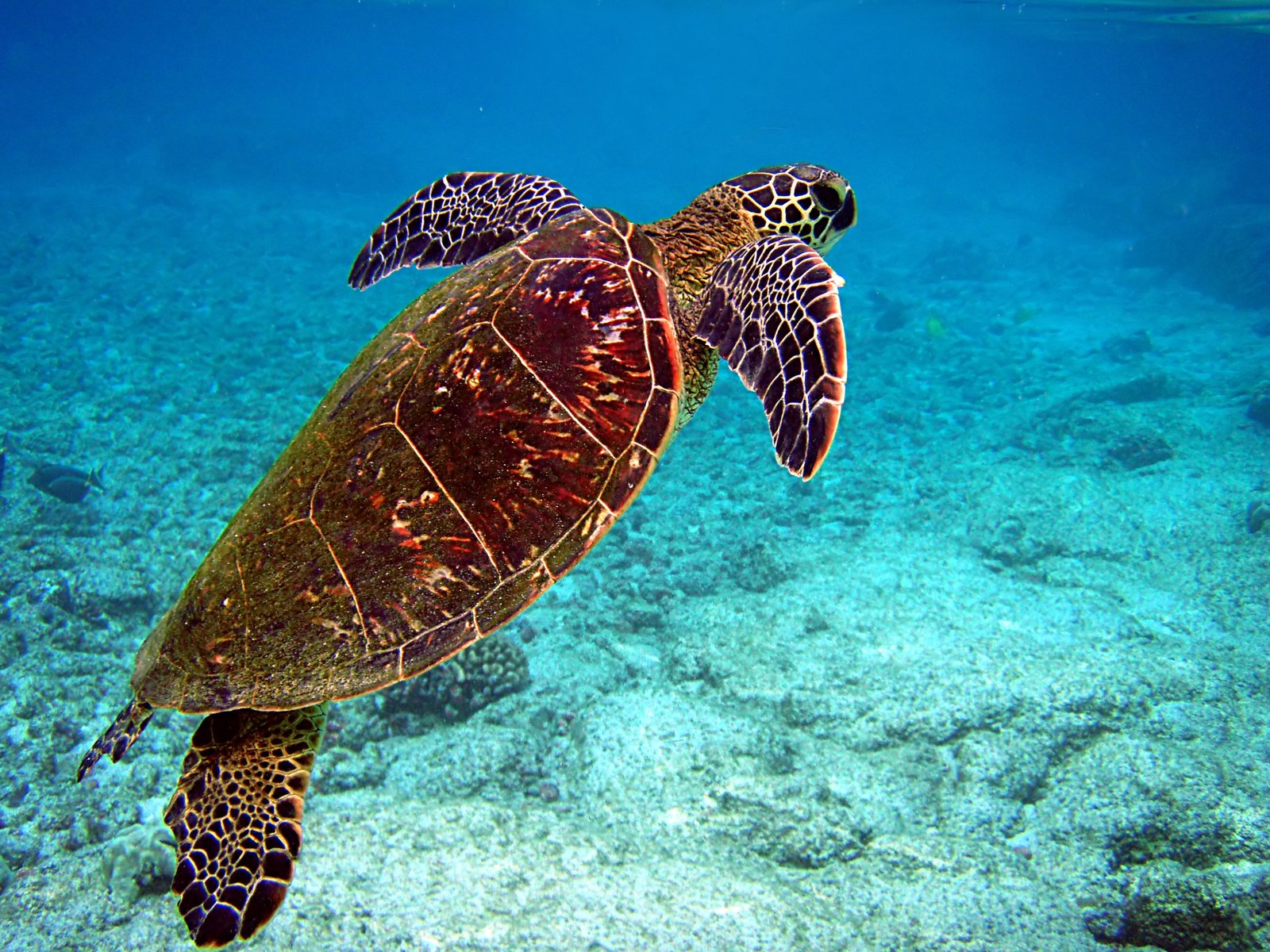
Green sea turtles are the second most abundant nesting species along Florida’s coastline. They received their name because of the greenish color of their fat, not their shells as many people assume. These herbivorous giants have shown remarkable population growth over recent decades.
Green turtle nest counts have shown a strong overall increase since standardized nest counts began in 1989, with 2024 counts reaching more than 10,000 nests recorded on the 27 core index beaches. Their nesting follows an interesting pattern – nesting green turtles tend to follow a two-year reproductive cycle with wide year-to-year fluctuations, setting record highs in 2011, 2013, 2015, 2017, 2019, and 2023.
Leatherback Sea Turtles – The Ocean Giants

Leatherback sea turtles represent one of nature’s most impressive spectacles when they come ashore to nest. These gentle giants are the largest sea turtles in the world, and their presence on Florida beaches is always cause for celebration among conservation biologists.
Like nest counts for green turtles, leatherback nest counts have been increasing exponentially over the monitoring period, though numbers reached a peak in 2014 followed by a steep decline and a promising increase from 2018-2024. Last summer was particularly exciting when a leatherback laid a nest on Sanibel Island – only the fourth time that species nested there – while another leatherback dropped eggs in Pinellas County for the first time in recorded history.
Kemp’s Ridley – The Most Endangered Nester
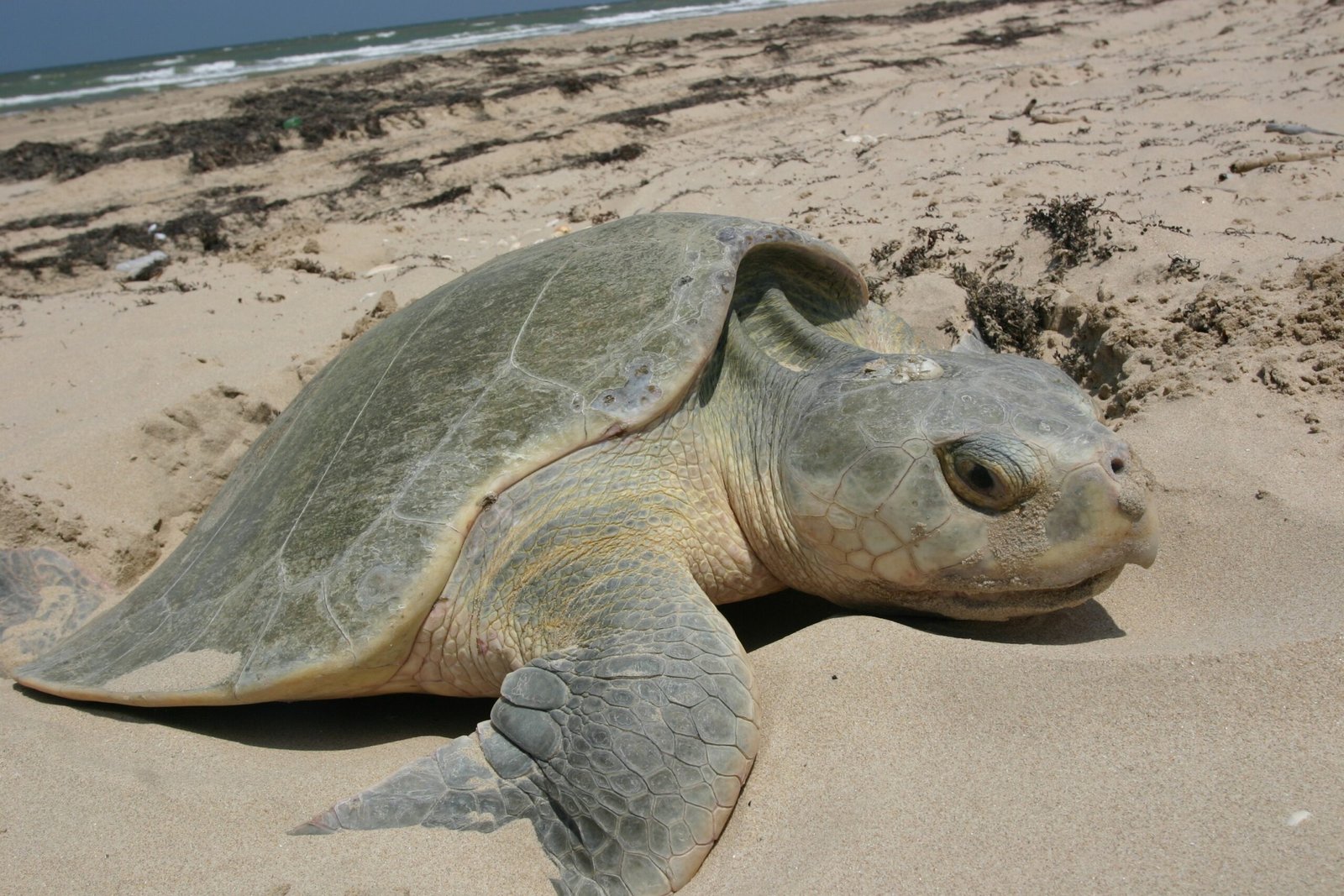
Kemp’s ridley sea turtles are the smallest sea turtle in the world and are considered the most seriously endangered of the sea turtle species. What makes these turtles truly unique is that they’re the only species of sea turtle that routinely nests during the day.
While their primary nesting grounds are in Mexico, Kemp’s ridley turtles can be found sparsely nesting on Florida beaches, with 12 nests recorded in the entire state of Florida in 2018. In 2024, Florida recorded a record-breaking 34 Kemp’s ridley nests, showing that conservation efforts are making a real difference.
Hawksbill Sea Turtle – The Rare Visitor

Hawksbill sea turtles present a more complex story when it comes to Florida nesting. Hawksbill turtles nested on Florida beaches in the past but are not currently consistent nesters in the state. However, they haven’t completely disappeared from Florida’s shores.
In the continental United States, nesting is rare and is restricted primarily to the southeast coast of Florida and the Florida Keys. Nesting primarily occurs from June to August in Florida, with females coming on shore to develop nests on sandy beaches mainly during daytime hours. While their numbers are extremely low, any hawksbill nest found in Florida is considered a significant conservation victory.
Olive Ridley Sea Turtle – The Occasional Wanderer
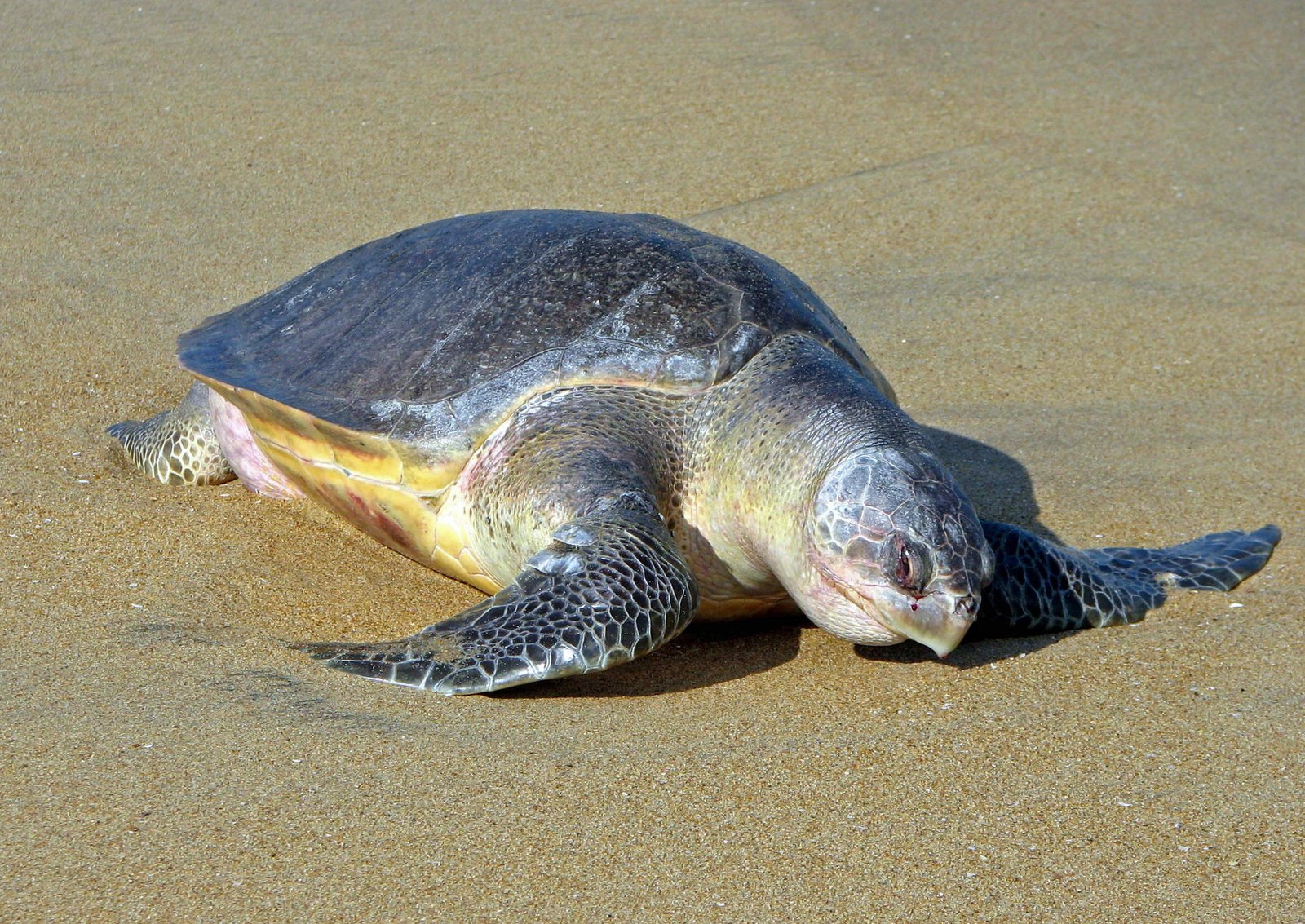
Olive ridley sea turtles represent one of the rarest nesting species in Florida waters. This species is among the smallest, but the most widespread and abundant of the world’s sea turtles. However, their nesting in Florida is extremely sporadic and uncommon.
These turtles are better known for their massive synchronized nesting events called “arribadas” in other parts of the world. Olive ridleys have two nesting strategies, solitary or mass nesting (arribada), where synchronized mass nesting involves thousands, if not tens of thousands, of olive ridleys. While Florida doesn’t host these spectacular events, occasional olive ridley nests have been documented along the state’s beaches.
Flatback Sea Turtle – The Australian Native
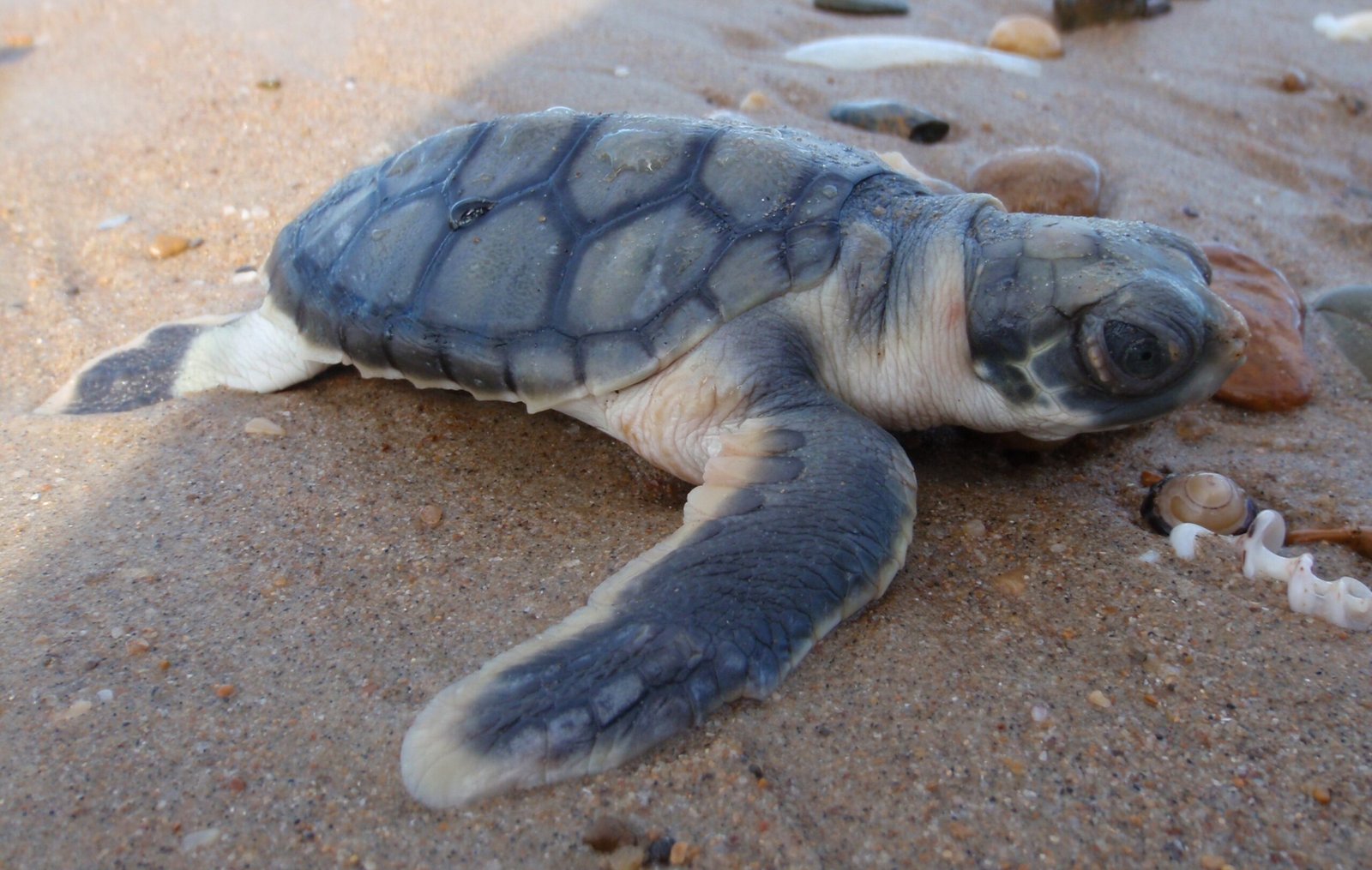
The flatback turtle is found only in Australia. This species represents one of the seven sea turtle species worldwide but has never been documented nesting on Florida beaches. While we include it in our count of sea turtle species, it serves as a reminder that not all sea turtle species have global distributions.
Flatback turtles have the most restricted range of any sea turtle species, nesting exclusively on beaches in northern Australia and southern Papua New Guinea. Their absence from Florida waters highlights how some species have evolved to thrive in very specific geographical regions.
Hybrid Turtles: Nature’s Rare Surprise
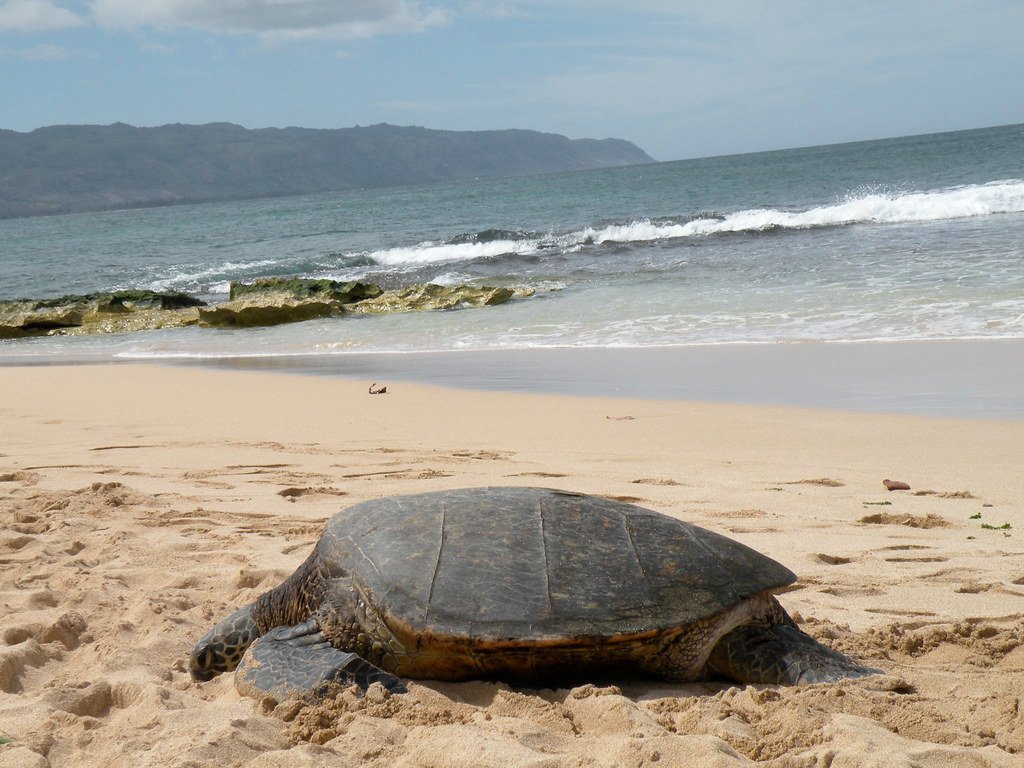
Every so often, Florida’s beaches reveal something truly unexpected—hybrid sea turtles. These rare offspring, often the result of a Loggerhead crossing with a Hawksbill, prove that nature still has a few surprises left in its playbook. While hybrids don’t appear in large numbers, scientists say their presence is a reminder of how diverse and resilient sea turtle genetics can be. Spotting one is like witnessing evolution experimenting in real time, a fleeting glimpse of nature’s creativity along the shoreline. For beachgoers and conservationists alike, hybrids add an extra layer of wonder to Florida’s nesting season.
Conservation Success Stories Along Florida’s Coast

The story of sea turtle recovery in Florida showcases what’s possible when communities, scientists, and government agencies work together. Overall, 2024 was a successful season as Florida recorded 126,263 sea turtle nests across all species. This number represents years of dedicated conservation work paying off.
In 2024, Martin County’s 22 miles of coastline was home to 16,273 sea turtle nests, representing a 25% increase over the previous year. These kinds of increases don’t happen by accident – they’re the result of careful habitat protection, lighting ordinances, and public education campaigns.
The remarkable recovery of sea turtle populations along Florida’s shores proves that conservation efforts really work. From the tiniest Kemp’s ridley to the massive leatherbacks, each species faces its own unique challenges and tells its own story of survival. As you walk along Florida’s beaches during nesting season, remember that you’re witnessing something truly extraordinary – an ancient dance between land and sea that has continued for millions of years. What would you guess happens to those tiny hatchlings once they make their dash to the ocean?

Hi, I’m Andrew, and I come from India. Experienced content specialist with a passion for writing. My forte includes health and wellness, Travel, Animals, and Nature. A nature nomad, I am obsessed with mountains and love high-altitude trekking. I have been on several Himalayan treks in India including the Everest Base Camp in Nepal, a profound experience.

